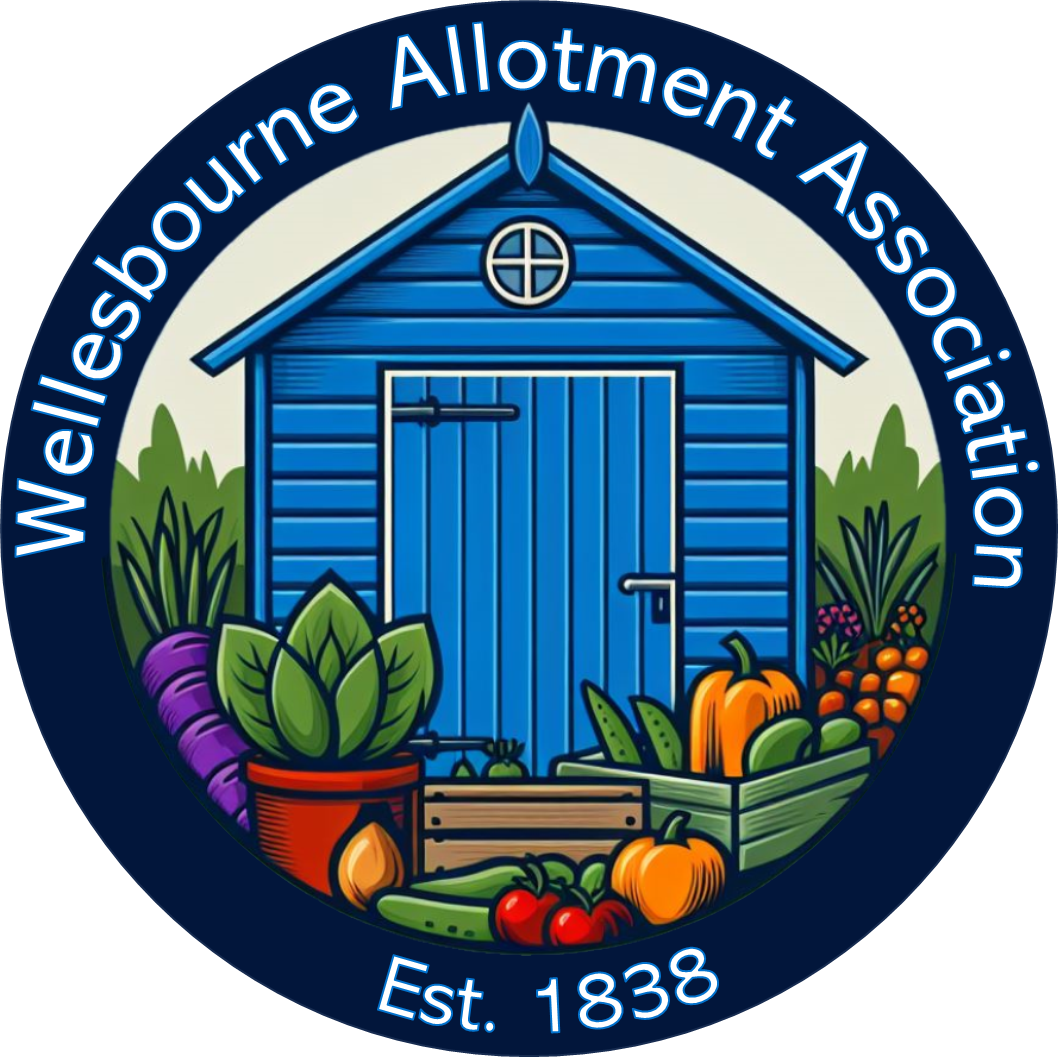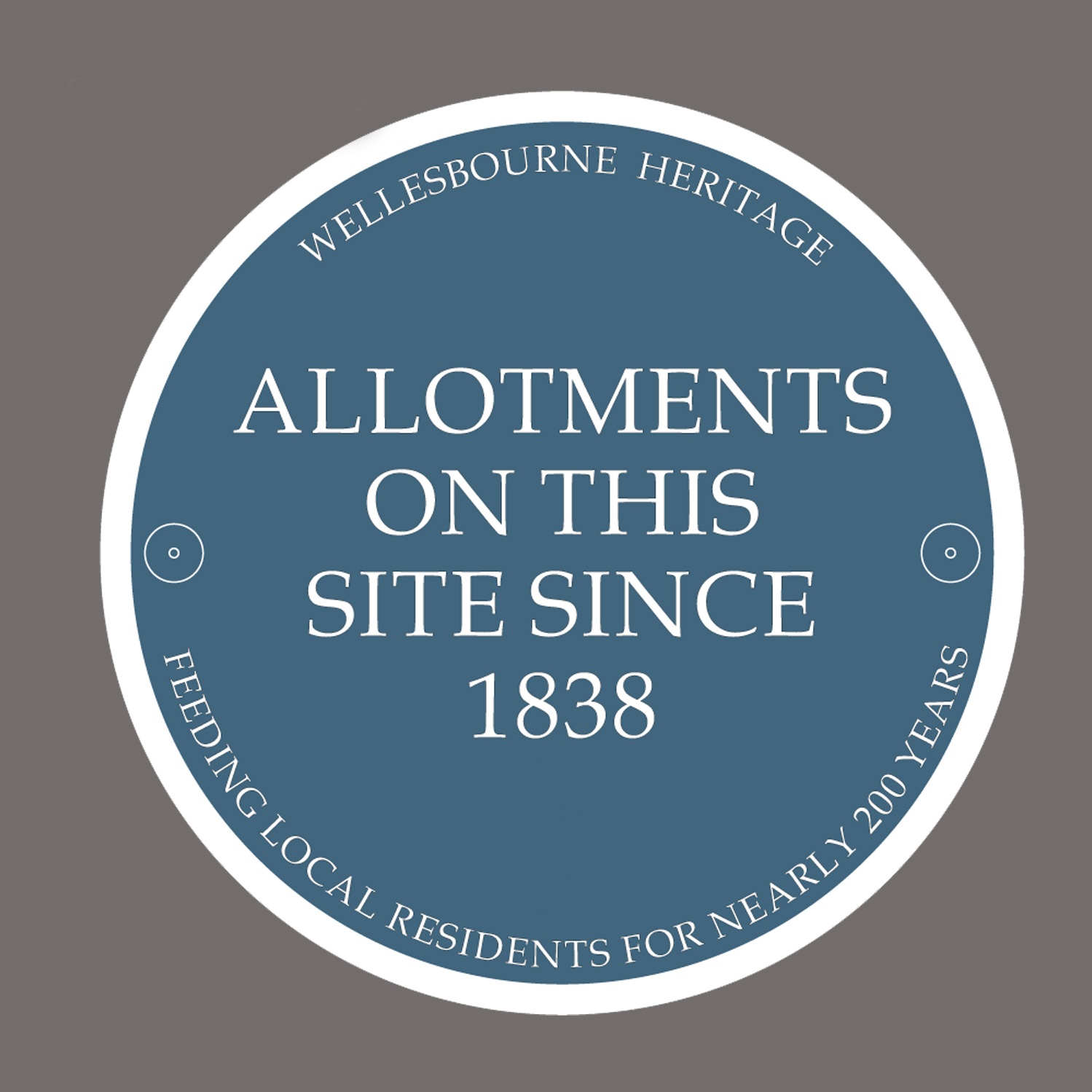HISTORY OF WELLESBOURNE ALLOTMENTS
Earliest records show Wellesbourne residents growing their own food on our current site before 1733 when it designated as Common Land. The Wellesbourne Enclosure Act of 1733 gave ownership of our current site to the local St Peter’s Church and required residents using the land to pay rental to the village vicar. The land became officially known as ALLOTMENTS in 1838, making our site more than 180 yrs old - one of the oldest in the UK.
In 1971 as part of blanket reforms to the ownership and management of Church (Glebe) land, our site became owned by Coventry Diocesan Board Of Finance and who are now our landlords
Source Hobsbawm and Rudé, 1969, p. 26
1604-1942 - The Enclosures
The Enclosures - the theft of Common Land on an industrial scale
“ Between 1760 and 1870, about 7 million acres (about one sixth the area of England) were changed, by some 4,000 acts of parliament, from common land to enclosed land. However necessary this process might or might not have been for the improvement of the agricultural economy, it was downright theft. Millions of people had customary and legal access to lands and the basis of an independent livelihood was snatched away from them ”. Simon Fairlie, A Short History of Enclosure in Britain , The Land, 2009
Continuing well into the mid - 20th century, The Enclosures are now recognised as the UK’s biggest ‘Land Grab’. One of the most notorious examples of a law that benefited the wealthy at the expense of the English peasantry. To this day only 0.06% of the population own more than 50% of England and this figure has its roots deep in the early history of enclosure.
George Orwell, a socialist, wrote in 1944:
Stop to consider how the so-called owners of the land got hold of it. They simply seized it by force, afterwards hiring lawyers to provide them with title-deeds. In the case of the enclosure of the common lands, the land-grabbers did not even have the excuse of being foreign conquerors; they were quite frankly taking the heritage of their own countrymen, upon no sort of pretext except that they had the power to do so’
1734 - Wellesbourne Enclosure Act (1)
Several local landowners benefited from The Enclosure of Common Land in Wellesbourne in 1734, including Sir Charles Mordaunt of Walton Hall & The Lucy Family at The Charlecote Estate.
However it was Rev. Francis Whyle - The village vicar of St Peter’s Church who acquired ‘The Vicars’ part, which included our present allotment site. The residents of Wellesbourne were now required to pay rent to local vicar for the privilege of growing their own food on this site .
Arthur Young's 1801 report argued that those who lost commons rights to the land should be compensated with small enclosures of their own - he proposed Allotments. Since it was generally acknowledged that a rural labourer's wages could not support his family, which therefore had to be supported by the poor rates, there were good arguments on all sides for providing the dispossessed with sufficient land to keep a cow and tend a garden .
Historical records indicate our current site officially became ALLOTMENTS, for the benefit of the people of Wellesbourne, around 1838 making them at least 180 yrs old – one of the oldest in country. At this time, Lord Rev. Charles Paulet at St. Peter’s Church became the beneficiary of the rents paid by Allotment holders.
(1) Warwickshire County Record Office.
Joseph Arch MP - Our local hero & champion of Agricultural Workers and Allotments
1826-1919 JosEph ArcH- CHAMPION OF Agricultural Labourer’s UNION & allotments
The failure of The Enclosures to feed the population efficiently and, together with many disastrous economic decisions by Parliament, led to wide spread hunger & discontent across rural England. Agricultural workers were starving - stripped of their ability to grow their own food on Common Land and kept within adverse poverty by the exceptionally low wages paid by the new land owners.
Probably inspired by Gerrard Winstanley & the Diggers Movement, On 7th Feb 1872, Barford resident, Joseph Arch held a meeting in Chestnut Square, outside The Stag Pub in Wellesbourne which attracted 2000 discontented local agricultural workers. Following this meeting, Joseph Arch organised ‘Strikes’ and formed The National Agricultural Labourer’s Union on 29 May 1872. Subsequently replaced by the National Union of Agricultural and Allied Workers in 1906.
In 1885 Joseph Arch became the first agricultural worker to become a Member of Parliament. He used his maiden speech in the House of Commons to champion the Allotment Movement.
A plaque commemorating these events can be found in the bus shelter in Chestnut Square. Below watch the videos of The day we celebrated the life of local hero, Joseph Arch held in Barford & Wellesbourne on Sunday 9th Feb 2019
Wellesbourne Allotments is a highly attractive site for developers and remains very vulnerable
1971- - The Threat has now been lifted
As one commentator recently put it "The church's failure is so enormous that it now treats the country's heartlands as mission fields, and not the thriving parishes they once were. “
The ownership of our Allotment site was transferred to Coventry Diocesan Board Of Finance (CDBF) in 1971 as part of The Endowments and Glebe Measure which when completed in 1978 transferred the ownership and management of all Church of England ( Cof E) land in the UK from its local parish to their regional Diocesan Boards of Finance (DBF)
Despite being the 16th richest charity in the world, The C of E faces a catastrophic decline in popularity and claims it needs to raise money, well above and beyond the gifts it receives from its congregation and its investments.
Although CDBF owns much land in the County it could sell, it has identified our Allotment site as a potential opportunity to capitalise on the rapid development the village of Wellesbourne is currently experiencing.
The Wellesbourne Allotment and Garden Holders Association launched SOWA campaign- Save Our Wellesbourne Allotments - in June 2017






